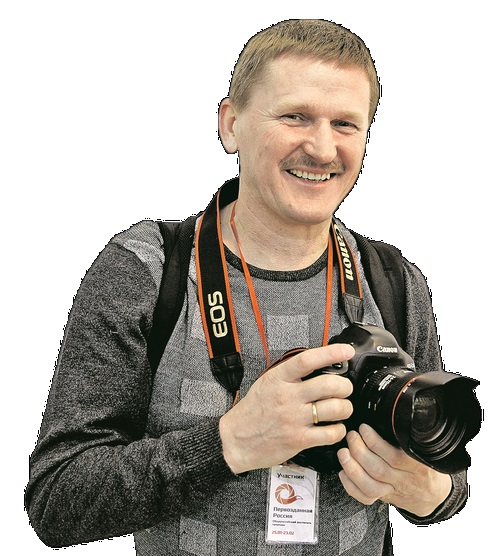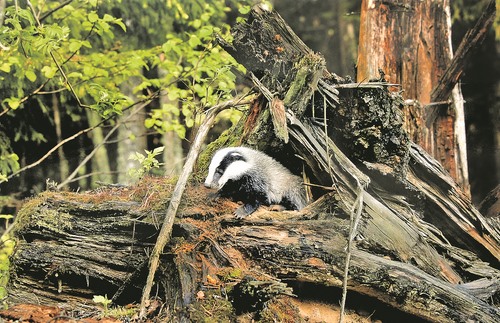Sergey Plytkevich heads the Krasny Bor International Wildlife Foundation. He was born in the Gomel Region and graduated from Polotsk Forestry College and the Belarusian State University’s Journalism Department. He has authored such albums as My Belarus, Belarusian Exotics, The World Begins in Polotsk, and Unexpected Belarus.
My characters are wild animals, who rarely recognise borders: they simply wander. I’ve taken photos within the Berezina and Polesie radiation reserves, as well in the national parks of Belovezhskaya Pushcha, Pripyatsky, Narochansky and Braslav Lakes.

You know your characters well…
There are many tricks in this field. My friend used to attract elk in the Chernobyl zone by hiding behind a photo of an eating elk. When an elk appeared, it groaned, approached to about 10m, and then ran away. My friend returned the groan, which inspired the animal to return, coming closer, and we took a great photo!
Where should tourists go to take good photographs?
I’d recommend Krasny Bor Reserve, as the landscapes and wildlife are wonderful. It borders the Pskov Region of Russia, where Sebezhsky National Park is situated. The establishment of a Belarusian-Russian complex similar to the Belovezhskaya Pushcha is being discussed;, where one part belongs to Poland and the other to Belarus. Elk and auroch have been bought for the site but fallow deer and mauflon live there already, as do some other exotic animals. Walking paths are laid out and there are great hotels. In spring, you can boat the rivers Svolna and Nishcha.

Belarus’ rich nature and wildlife captured on camera
Hare pay no attention
We managed to take pictures of hare during their mating time, watching them running one after another without paying attention to us, standing by the car. They’d be as close as 2m, without fear, such was their fervor. Meanwhile, we stood still, just observing…
Paradise for bears
Krasny Bor Reserve is less popular than the Belovezhskaya Pushcha and there are only bear there. However, the local habitat is wonderful and we hope more animals will be born there.

Beautiful Okmenitsa
Braslav Lakes National Park is known for its lakes but some wonderful rivers also flow through; the Okmenitsa is among the most picturesque, as its red clay creates the illusion of a bloody river where it’s just 5cm deep.
Pushcha’s host
Auroch came to Polesie Radiation Reserve after the Chernobyl disaster and the animals are doing well without people nearby. In summer, they prefer to stay private but, in winter, they come to feeding sites. In the 1990s, Przewalski horses came to the reserve from Ukraine, so the Belarusian animals increased by one species!

Non-hibernating badgers
In Polesie’s Radiation Reserve you’ll find young badgers.
Land of deer
It’s not safe to shoot deer when they’re fighting. An animal losing runs away and the victor tries to catch it. The former doesn’t look where it’s going so, if you appear in the way, you can be knocked down and gored.

Bird in black frockcoat
Black stork live on the Pripyat marshes. Not long ago, I heard a story about why so few of these birds remain in Belarus. An old man told me that our ancestors believed that seeing a black stork would result in misfortune. Accordingly, people would kill them. I don’t know whether this is true or not but, in recent times, more black storks have been registered in Belarus. At least, they’re quite often seen in Pripyatsky National Park.
Teeth chattering
In recent times, more wolves have been registered in Belarus too. They’re often seen beyond the Chernobyl zone, where hunting is prohibited, so wildlife photographers have the chance to meet this unrivalled animal.
By Nina Kataeva











